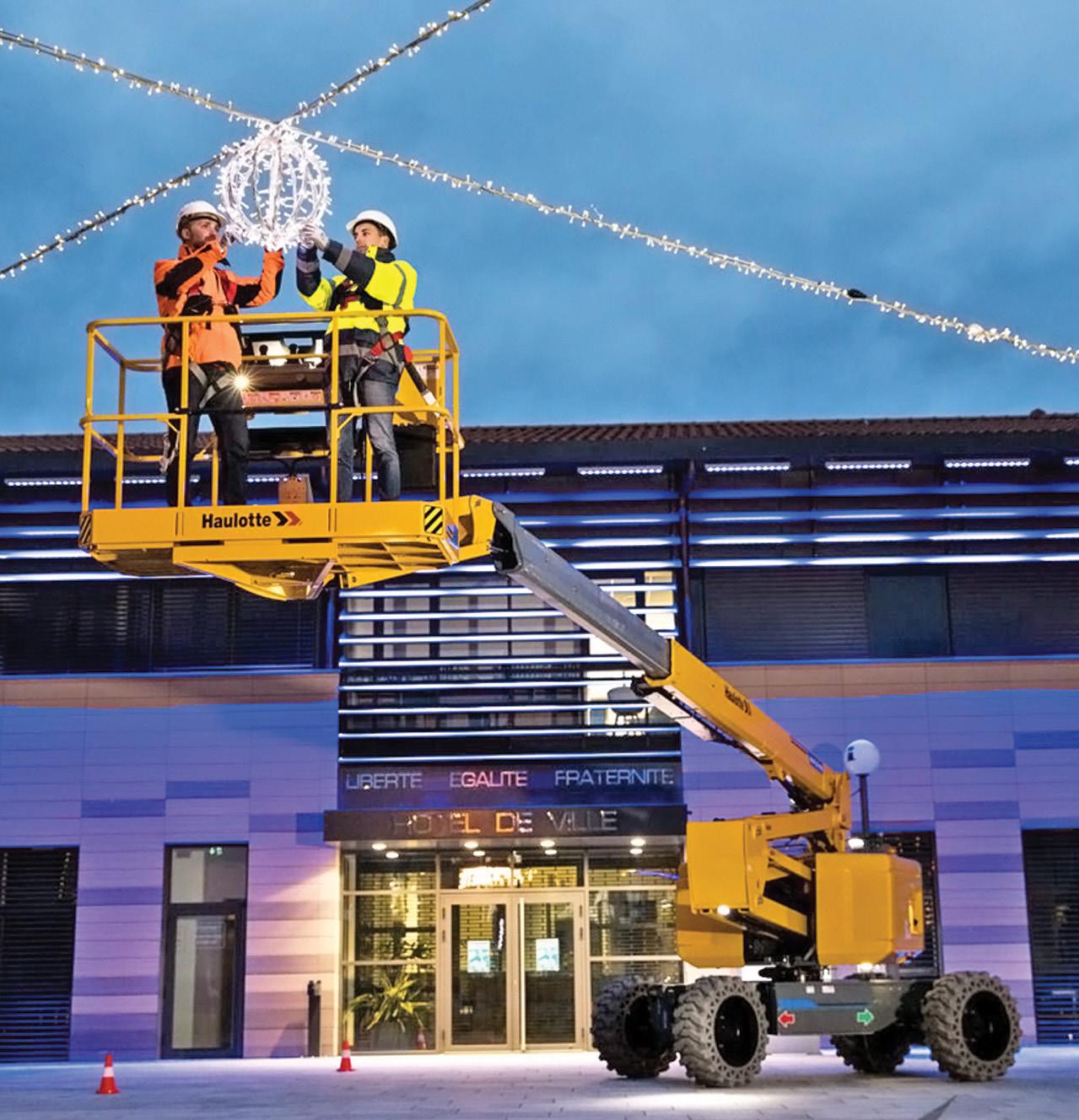
4 minute read
Lifting for the future
Customisable, smarter and greener. That is what lifting equipment operators are calling for as the trend towards digital integration and Industry 4.0 shows no sign of slowing down. Lifting Africa finds out more.
Progressive industrial crane manufacturers know that ongoing equipment development is non-negotiable. Meeting the demands of modern fleets is no easy undertaking. What does the modern machine look like? What should it look like? Will it stand the test of time in a rapidly changing world? These are but a few of the questions that are grappled with daily. According to Alexandre Saubot, CEO of Haulotte, one of the world’s largest access equipment manufacturers, now more than ever before original equipment manufacturers need to listen to their clients very carefully. Long gone are the days where manufacturers deliver equipment without considering the customer. It is all about creating equipment that meets – and exceeds – the needs of the customer, he says. “It is critical to have a very clear understanding of what customers want, but also what they are expecting of that machine. Around the world we are seeing this trend develop.” This, he says, is often a delicate balancing act because what customers want and expect are not necessarily the same thing. A machine that meets the environmental regulations, for example, might very well be what the client wants, only to realise on delivery it was operationally no longer doing what they were expecting.
Smart machines
Saubot says the pressure is on manufacturers to deliver the smartest machines possible with the emphasis very much on enabling customers to collect more data from their machines to increase efficiency and provide safer working environments. Whilst the basic keys to unlocking productivity are much the same - speed, reliability and availability- making lifting equipment smarter are now at the top of the agenda. According to Kai Schliephake, managing director, PartnerLift, it is all about the ability to gather data as this allows for better, faster decisions based on evidence. It improves the total cost of ownership, explains Saubot. “The better the information the more complete the overall picture is and troubleshooting becomes easier. It reduces incidents where a technician is sent out to a machine only to find that the fuel tank is empty or the battery needs to be charged.” Telematics technology, says Schliephake, is of increasing importance. These systems produce valuable data that can affect many areas of crane ownership, including fleet management, remote diagnostics, GPS tracking and even safety. Whilst industry was slow at first to take advantage of what it offers it has been gaining momentum and is now considered a must. “At least 90% of machines manufactured in Germany have telematics technology installed from the get go,” he says. Lance Sullivan, general manager at GMG, has experienced the benefit of telematics firsthand. “We did a large telematics deployment on our fleet and the benefits were seen very quickly.” The company that runs quite a large rental operation found that one of the immediate benefits was not having to handle a piece of
equipment as much. “We were no longer trying to call customers to try and get hours off the equipment during their operations, but found that the information we required was now at hand.” He said the ability to measure a host of different things was just as beneficial. “From a mechanical stand point of service on our rental equipment it certainly made a difference. There are always things that are going to need to be greased, some engine components that have to be changes and yes, while the move towards electric and hybrid technology will lesson to some extent, the introduction of telematics allowed us to monitor our equipment far better.”
Green is the new black
Environmental regulations are on the increase and companies around the world are having to meet stricter regulations. It is no different for the lifting industry, says Schliephake. “The demand for diesel machines is decreasing quickly. We can see the move to electric vehicles clearly and the industry is moving this way more and more.” He says the conversion of old machines to electric was also on the rise. According to Saubot, Haulotte took a strategic decision some five years ago already that any new machines put out to market would either be electric or environmentally sustainable meaning very low emissions. He said there was a real understanding of the impact the transition to a green machine had on operators who were suddenly faced with complications due to having different machines in their fleets and efforts were made to address this. There was no hiding from the fact though that around the world governments were coming down hard on pollutants and regulations were getting stricter. It was no longer about lower emissions but rather zero emissions.
Bespoke solution
According to Saubot, manufacturers are being asked to introduce more customizable elements into machines. “For us as a company this has meant that we have needed to rethink our machines. We cannot operate like in the past. One has to deliver a product that will achieve the performance required by any given customer.” Sullivan believes this new approach will allow for the overall experience for the manufacturer and the customer to be improved and better going forward.
Haulotte Africa,
haulotte@haulotte.com, www.haulotte.com












